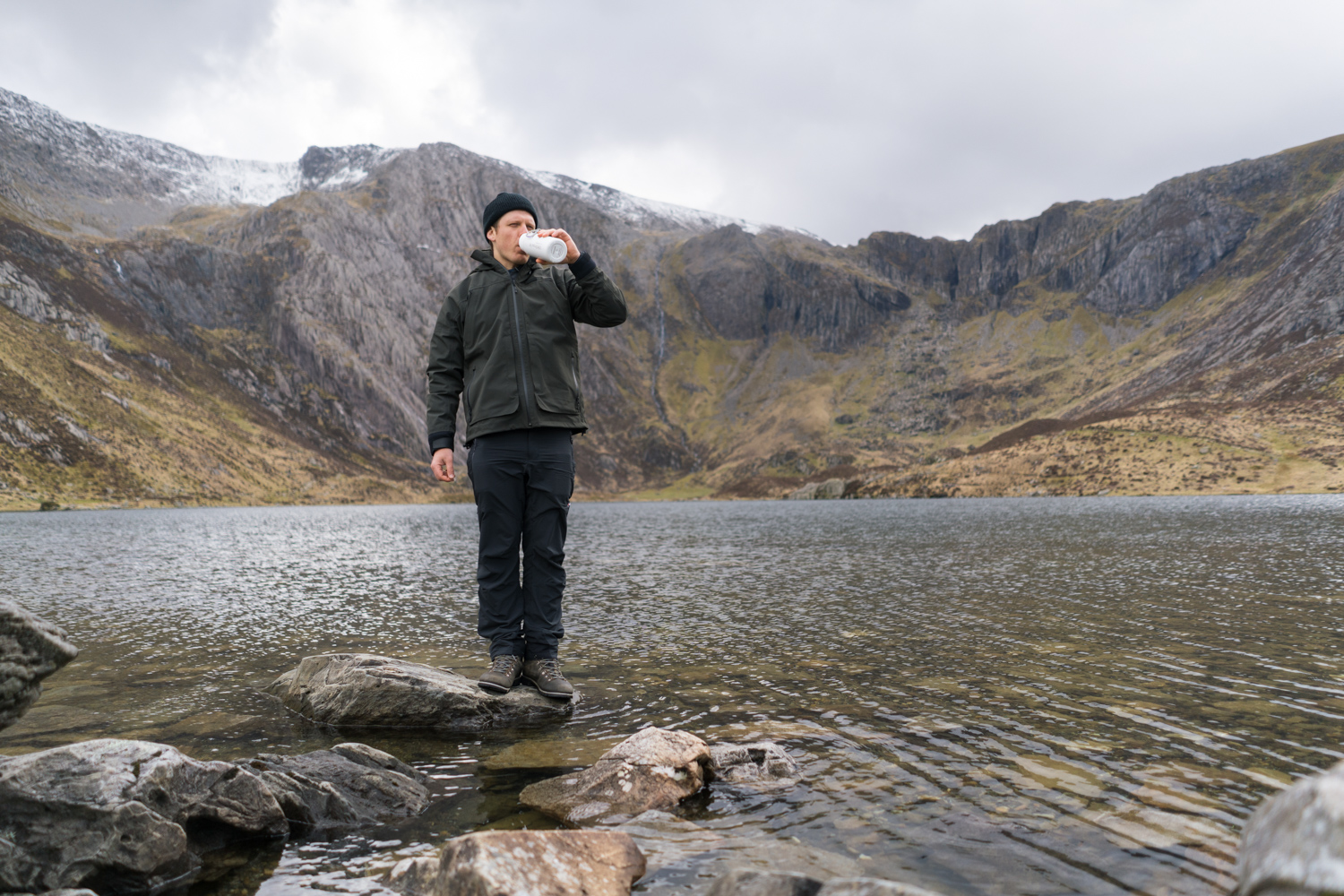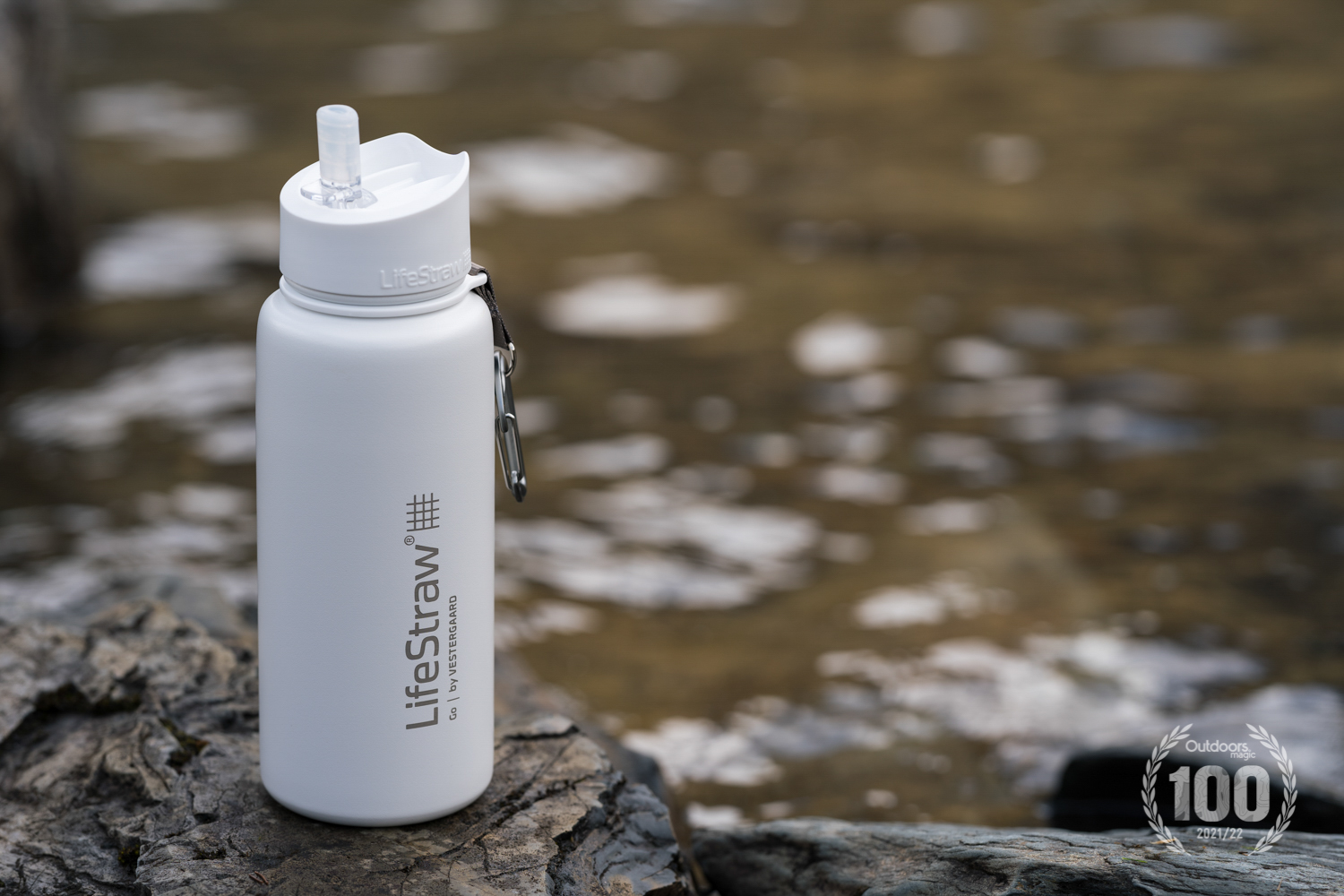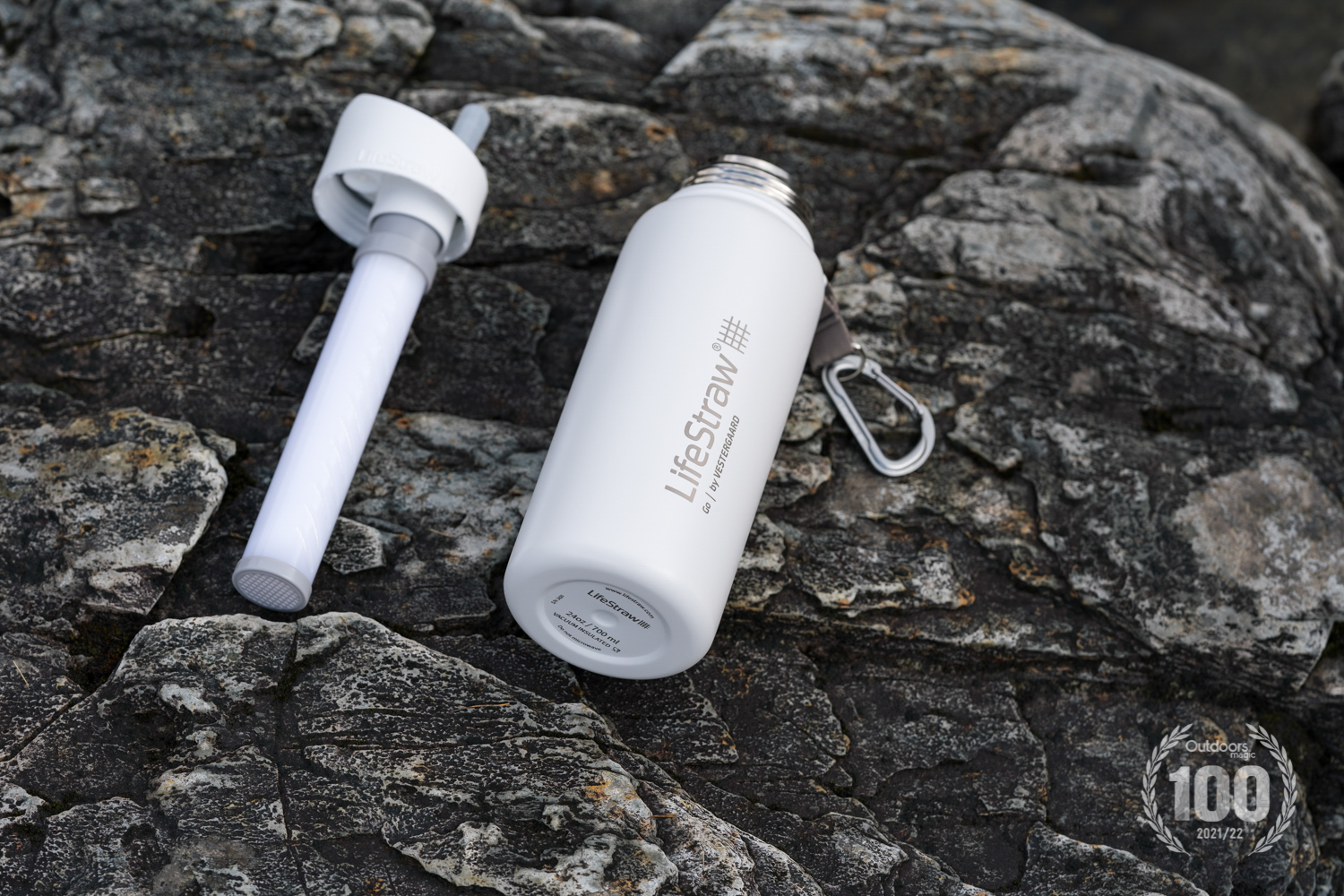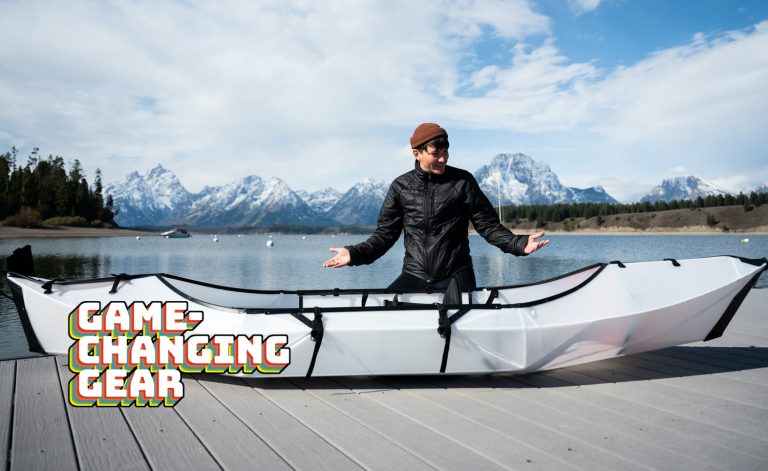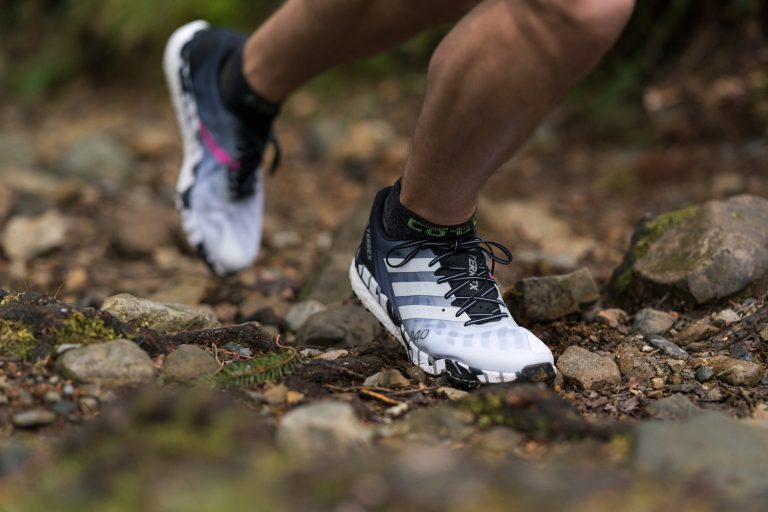Why We Chose The Lifestraw Go Stainless Steel: Useful, effective, practical design
We first reviewed the LifeStraw Go back in 2017, when we summed it up as “a great alternative to a conventional water bottle”. It not only makes clean water taste better, it also protects against bacteria, parasites, microplastics, chlorine and other nasties that would ruin an outdoor adventure. As such, filters like this are a useful addition to your wild camping or day hiking arsenal, allowing you to scoop water straight from streams, lakes and rivers without worrying about what might be lurking unseen in them. If you’re travelling, it also avoids the need to buy single-use plastic bottled water, provide you’re not in terrain where you need to worry about waterborne viruses.
The stainless-steel version of the LifeStraw Go takes things one step further. Essentially, it’s now a great alternative to a conventional double wall vacuum insulated bottle or flask too – just the thing to keep your water refreshingly cold for hours on the trail.
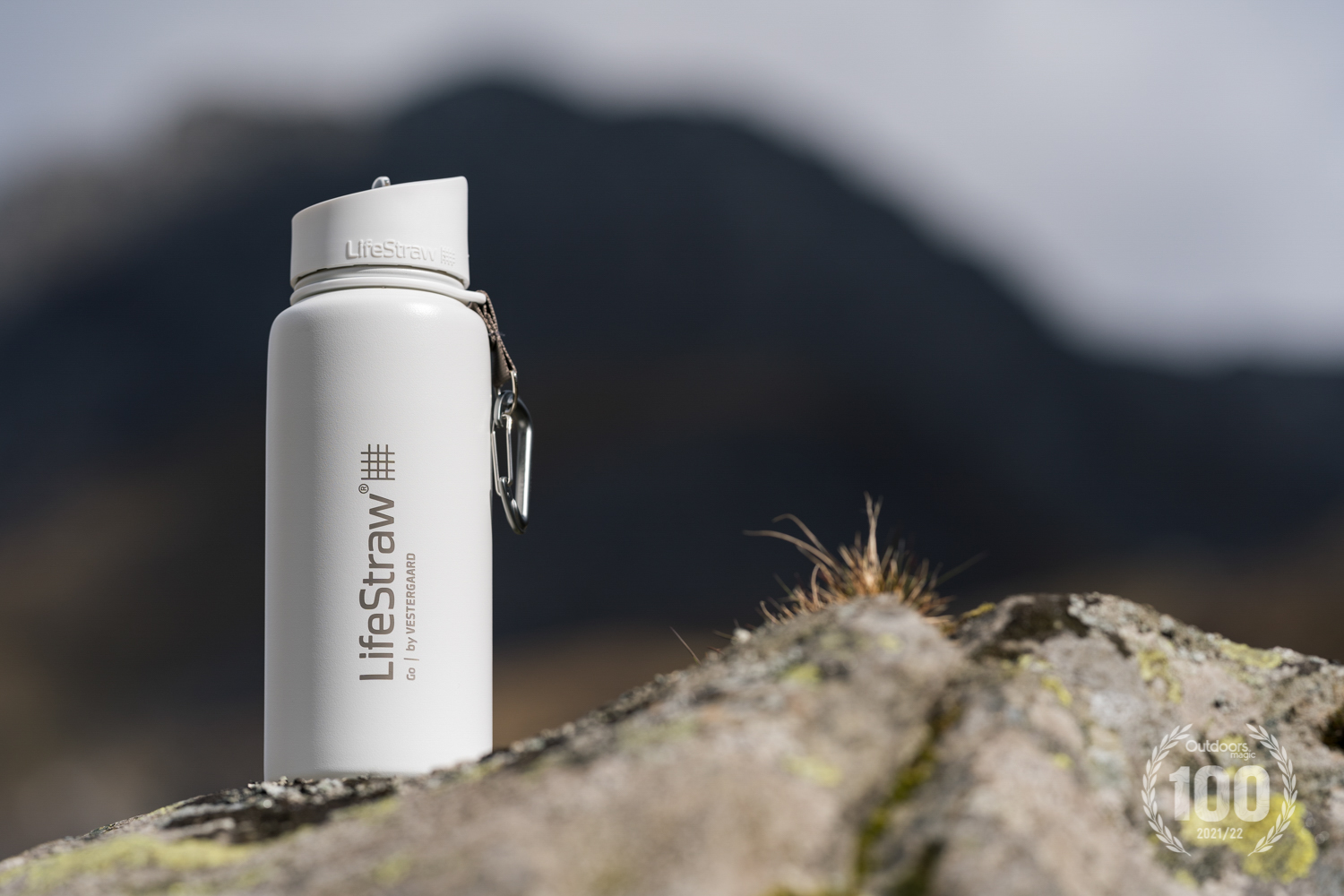
Who Is The Lifestraw Go Stainless Steel For?
It’s ideal for everyday use as well as outdoor adventures, since the insulated bottle keeps drinks nicely chilled, while the in-built LifeStraw filter makes water taste better even if you’re not worried about how safe it is. But it really comes into its own when travelling and wild camping, when dirty water might be a genuine concern. The ability to get fresh water from a variety of sources – streams, lakes and rivers – without needing to stop and filter it is very useful.
Of course, the design requires you to suck water up through the straw to use it, which makes it less good for filtering water for preparing hot drinks or camp meals. However, when used as intended – basically, as a replacement for your normal water bottle – it does a great job.
Materials
The bottle itself is made from double-walled stainless steel with a powder-coated finish. The capacity is 24 fluid ounces, or 710ml. It weighs about 17 oz or 480g when empty. It does a good job of keeping water cool throughout a full day’s walking, and the exterior finish is easy to grip. It also ensures the bottle doesn’t ‘sweat’ through condensation build-up on its outside surface.
“It not only makes clean water taste better, it also protects against bacteria, parasites, microplastics, chlorine and other nasties that would ruin an outdoor adventure.”
The water bottle is supplied with a membrane microfilter and activated carbon filter. The cap has a taste-free silicon mouthpiece and you also get a handy carabiner to clip it to your pack.
Features
LifeStraw’s two-stage filtration system employs a 0.2-micron membrane microfilter that is able to remove 99.999999% of bacteria and 99.999% of parasites, as well as 99.999% of microplastics, silt, sand, and cloudiness. Then a secondary activated carbon filter reduces chlorine and bad odours for improved taste. The membrane microfilter is rated up to 4,000 litres, while the activated carbon filter lasts up to 100 litres. Both elements are easily replaceable.
This eliminates the risk of ingesting bacteria like E.coli and Salmonella as well as parasites such as Giardia and Cryptosporidium. The LifeStraw Go will also do a good job of removing murk and deposits from turbid water, though the cleaner-looking the water you filter, the less likely it is to clog up. This isn’t necessarily a problem, but it does mean you’ll have to backflush the filter more regularly and may reduce its effective lifetime. It also means you have to suck a lot harder to get a drink!

